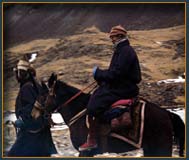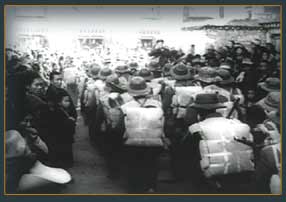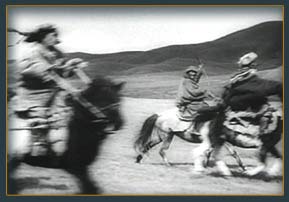

 |
 |
|

Page 1 - 2 - 3 - 4 - 5 - 6 - 7 - 8 - 9 A COLD WAR IN SHANGRI LA March 1959. A suburban house outside Washington, D.C. Two men – an American and an oriental-looking monk – keep vigil beside a wireless receiver. Meanwhile, thousands of miles away in Tibet, a tense drama is unfolding: the Dalai Lama, disguised in layman's clothes, has escaped from his summer palace and is believed to be heading south for the Indian border. The Chinese military command in Lhasa discovers his disappearance only three days later. Crack troops from the People's Liberation Army set out in hot pursuit across the uncharted terrain of the Tibetan plateau. The news breaks the international headlines and the world waits with bated breath to find out whether or not the young "God King" will make it safely across the great Himalayan barrier. This is one of the escape stories of the century.
In late 1949, shortly after the Communist takeover of China, the People’s Liberation Army invaded Tibet. Tibet’s tiny army was quickly defeated and by the summer of 1951, Chinese troops were marching into the capital, Lhasa. The 17-year-old Dalai Lama, Tibet’s temporal and spiritual leader, was forced to come to terms with the Chinese. Throughout the fifties, Chinese soldiers poured into Tibet. In Lhasa, the Tibetan government, headed by a teen-aged Dalai Lama, maintained an uneasy coexistence with the occupying forces but in the outlying provinces of Kham and Amdo, the Chinese began in earnest to impose communist reforms. The very essence of Tibetan life – Buddhism – came under threat. In 1956, the siege and bombing of Lithang Monastery in Kham, sparked the revolt that had been waiting to erupt. Khampa tribesmen, known for their martial character, took to the hills and started a guerrilla campaign.   |